![]()
![]()
![]()
Use LEFT and RIGHT arrow keys to navigate between flashcards;
Use UP and DOWN arrow keys to flip the card;
H to show hint;
A reads text to speech;
17 Cards in this Set
- Front
- Back

|
Venus of Willendorf. 24, 000 BC. A fetish image. Suggestive of a woman. Conceptual because not realistic. Concept represents fertility.
|
|
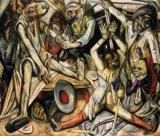
|
Night. Max Beckmann. Cartoon-like. Represents abuses of the government. Expressionism. Emotions, outraged. Points out wrongdoings.
|
|
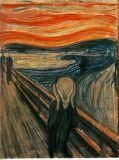
|
The Scream. Edvard Munch. 1893. Represents an emotion. It is a symbol. Expressionistic.
|
|
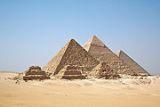
|
Pyramids. 2500 BC. Tomb for Pharaohs in Egypt. Buried subterranean (below ground).
|
|
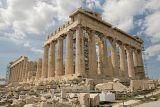
|
Parthenon. 5th century BC. Built for the Athena. Athena sculpture crafted from composite materials (wood, gold, marble). In Greece. Could see Athena from outside. Worshipers worshiped outside.
|
|

|
Notre Dame Cathedral. 1163-1240s. Gothic cathedral. Name means, "Our Lady" in French. Purpose for worship. Functioned as an economic booster.
|
|
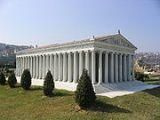
|
Temple of Artemis. 550 BC. Elevation.
|
|
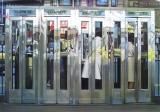
|
Telephone Booth. Richard Estes. Painting based on a photograph. Complex, very realistic paintings. Based on optical reality. Reality of the camera.
|
|
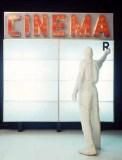
|
George Segal. Cinema. 1963. Pop Art. Plaster. Uses latex molds to create loose forms. Places them in realistic settings as if the plaster sculptures replace people.
|
|
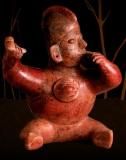
|
Colima, Mexico. Pre-Columbian. Terracotta clay - lowfire process. Burnished below 1500 degrees. Hollow. Carved decorations. Shiny leather hard surface - rubbed with bone. Possibly made using the pinch method. Created in sections and "welded" together with clay.
|
|

|
Greek pottery. Sought after black figure technique. Black slip. Thrown pot.
|
|
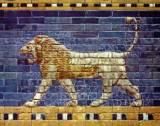
|
Ishtar gate. Neo-Babylonian brick gate. Bas-relief - comes out slightly. Glazed glass coating.
|
|

|
Pieta. Michelangelo. 1499. St. Peter's Basilica in Vatican City. Marble. High-relief - in the round. Hammer and chisel cutting out sections.
|
|

|
Stone Henge. Limestone. Carved on ground. Quarried 100 miles away. Possibly sacred sight with religious significance. Burial grounds?
|
|
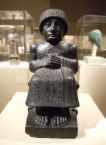
|
Statue of Prince Gudea. Acadian sculpture made of diorite from Lagash. Hard material in the round.
|
|

|
Donatello. Mary of Magdalene. Italian Renaissance. Subtractive wood. Life-size.
|
|

|
Constantin Brancusi. Bird in Space. 1932. Cire perdue technique - lost wax. Covered wax in clay to make a mold. Pour melted metal into mold, break away clay.
|

